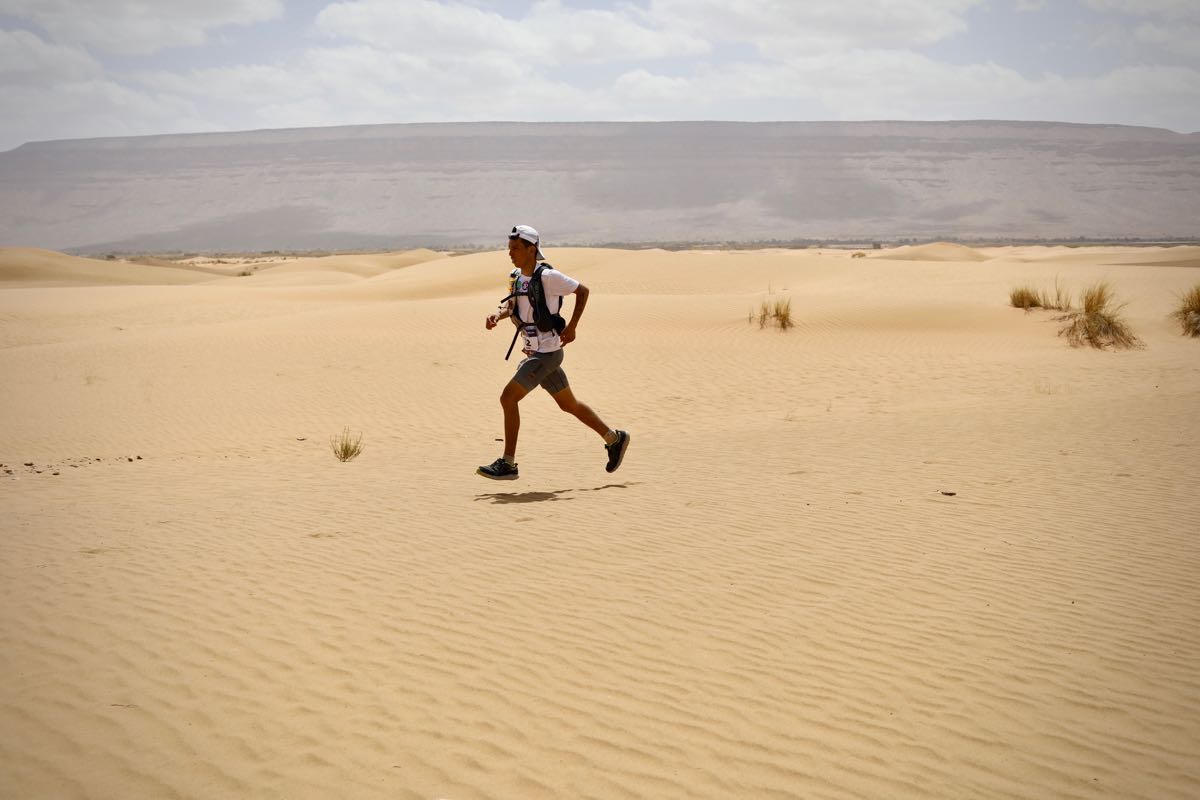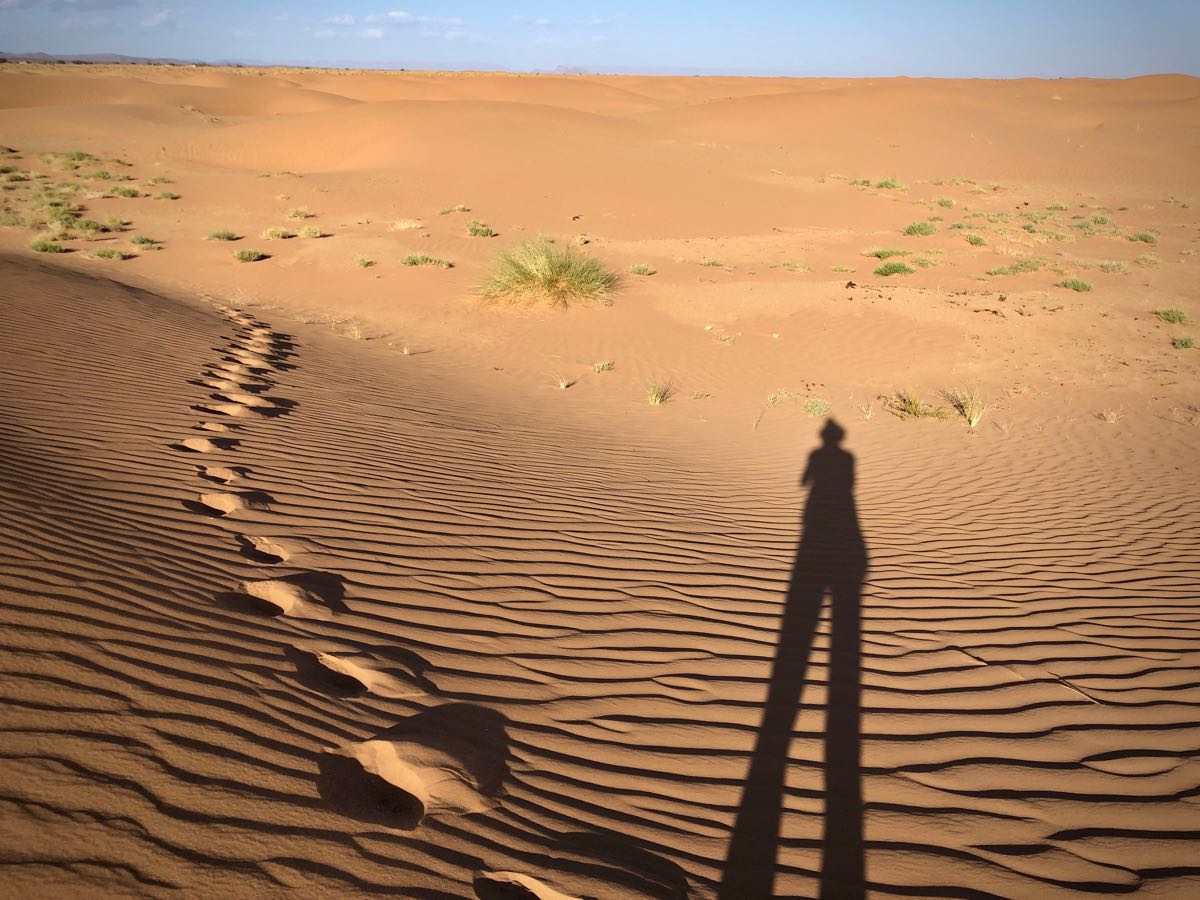School’s out, the watermelons are ripe, the grills are fired up, and the sun is hot. It’s summer in the Northern Hemisphere! As a beginning runner, getting your training runs or races done during a summer heat wave can be really tough. Runners, especially trail runners, tend to believe that training should feel and be hard, and of course at times it is. But running in hot weather can turn an easy run into a hard effort, without gaining the benefits of either a true easy day or a real harder workout. With this article, we offer the basics on how heat affects the body, how we can adjust our running effort in the heat, and how to make easy changes to mitigate that heat. While this article is intended for newer trail runners, we think there’s something here for everyone.
The Basics of How Heat Affects Runners
First, let’s dive into a very simple description of how heat affects the body while we run. You start running, the body heats up, your blood is diverted to the skin to offload that heat and produce sweat which helps cool you. Because more blood is being used in this way, less blood is available to fuel muscles with oxygen. This makes your heart work harder. A higher heart rate due to heat results in an increased effort, even if you are running the same pace you always run. Runners react differently to heat and are accustomed to varying temperatures, but at some temperature threshold, increasing heat results in performance decline. This temperature threshold is partially dictated by the intensity one is running. And the longer the race, the more the impact of heat can add up and negatively impact performance.
The body has limited resources to keep us running smoothly. Blood is one of those limited resources, and one that is particularly important when it comes to running in warm temperatures. Your muscles require a lot of blood to operate while running, as does your stomach when digesting food during your long runs. Additionally, sweating reduces your blood volume. Running in hot weather taxes that limited resource.
If you would like to learn more, this iRunFar Running on Science column article dives more deeply into the science of how the body physiologically reacts to the heat.
Heat in Real Life
Imagine this real-life scenario: You are running a trail race or long run. You start off feeling great, the sun rises, it’s a perfect day on the trail. Slowly the temperature heats up. While you are warm and sweating, you are also totally comfortable. Your pace feels easy. About halfway up a climb though, you start feeling fatigued. You take a gel or some food, and nothing changes. Actually, you feel worse. What should you do?
First, consider the variables at play:
- Increasing heat and the body’s reaction to cool you (via the mechanisms we just discussed),
- Increased effort of the climb, and
- Increased blood needed in the stomach to digest the calories.
Each of these variables may be manageable alone, but how they work together in this scenario can have a negative influence on your overall performance. Let’s explore this a little more.

Ayoub Ahansal running in the heat of the Sahara Desert at the Trans Zagora Trail Morocco. Photo: iRunFar/Meghan Hicks
Eating and Running in Hot Temperatures
In regard to eating and running in hot weather, I have found that reducing my effort for three to eight minutes after taking in calories gives my stomach a chance to start the digestion process. Sometimes this just means eating and drinking on downhills, while other times I slow my pace by about 30 seconds a mile. Remember, blood is limited, so if you keep running at the same effort while eating, blood may not be able to move to the stomach to digest that food. When it’s hot out, reduce your effort when eating.
Why Uphill Feels Hotter
Often athletes complain of feeling much hotter on long climbs. When climbing a long hill in a race or training effort, your pace slows though your effort increases (even if you adjust effort accordingly). Running at nine-minute-mile pace is traveling at 6.5 miles per hour, or creating a 6.5-mile-per-hour breeze over your skin that can help cool you. When you start climbing and your pace slows to 18-minute miles, for example, you also cut that cooling breeze in half. Because you are not cooling as effectively, you’re going to get hotter! You can counter this with further reducing your effort or perhaps pouring water over your skin so it can help you cool down instead of that breeze.
What Else Should I Do About the Heat?
Occasionally during the summer months, you’ll have to run in hot weather. Following these guidelines will make for a more pleasant and safe outing.
Run in the Early Morning or Evening
This is fairly obvious, but simply avoiding the heat of the day can make your run a bit easier. Finding shade can also make a huge difference. Since trails are usually shadier than roads, this is a great excuse to get on the dirt! Not everyone can adapt schedules to avoid the heat of the day, but if you can it’ll help.
Educate Yourself About Heat Illness
Heat illness, while not common, is a serious issue that should be understood by runners and recognized by race volunteers and runner support crews. Heat illness causes mental confusion in those suffering from it, which can make the issue spiral out of hand if not resolved. To better understand heat illness, dive into iRunFar’s Trail First Aid article on heat exhaustion.
Run by Effort Not Pace
If you typically run 9:00 minute-mile pace on a 60 degree Fahrenheit day, running 9:00 minute-mile pace on a 90 degree Fahrenheit day is forcing your body to work harder. Your pace may be the same but your heart rate will undoubtedly be higher due to factors described above. How much you should slow down depends on how hot it is, your fitness, and how acclimatized you are to the temperatures. Generally speaking, your running performance will be affected starting at 68 degrees Fahrenheit and hotter. That’s a good thing! Don’t fight a slower pace. Keeping your heart rate within the normal range regardless of temperature is an accurate way to keep effort consistent. But many runners don’t have an accurate heart-rate monitor, so measuring perceived effort can also be a good way to keep your effort controlled for those hot summer days. Don’t get discouraged when your pace is much slower on hot days, and don’t turn an easy day into a hard workout by running your normal pace in abnormal conditions.
Consider Cooling Clothing
Wear loose-fitting clothing that provides air flow. Air flowing over wet skin does a great job of offloading heat. We often see runners wearing white but any color that is lighter than your skin will absorb less heat than darker colors.
Get Wet
Keeping your skin and clothing wet is a huge benefit. If running a hot-weather race, cool off at the aid stations. The few seconds it will take to sponge off your head and wet your shirt will easily be worth it when you feel good during the miles ahead. Here’s an interesting iRunFar article from the Running on Science column which talks about about these and other cooling strategies, and what science tells us about why they work.
Hydrate
How much you should hydrate with depends on how long you are running and how hot it is/how much fluid loss you experience. As hydration can be a complex and important topic for hot- and cold-weather running, read this previous iRunFar Trail Running 101 article for an introductory discussion of hydration. It’s also important to not drink too much, as overhydration is perhaps as much of a health issue as dehydration. Read this in-depth article about overhydration from iRunFar’s Trail First Aid series to learn more. Science’s current recommendation is that we should drink to thirst. If you’re thirsty, drink. If you’re not, don’t.
Drink Your Calories
Liquid calories are easier to digest than solid ones, so reduce the work your stomach has to do by drinking your calories. There are lots of options for drinks with calories and electrolytes, so experiment on what your taste buds and stomach like.
Wear Sunscreen or Clothing that Protects Your Skin From the Sun
Sunburn not only makes your skin feel hot but it actually reduces the heat-regulating ability of your skin. If you’re out on the trail, lotion up or cover up! As we learned in that Running on Science cooling-techniques article, sunscreen made of inorganic chemicals impairs the natural sweating process, so it’s important to block the sun with sunscreen made of organic chemicals or clothing.
Heat Acclimation is Your Friend
Have you ever noticed that running in the summer seems to get easier as the season goes on? That’s because the body acclimates to and becomes more efficient in the heat. Learn more about the acclimation process in this Running on Science article.
Be Honest with Yourself!
Don’t argue with the facts that running in the heat is more difficult than running in cool temperatures. Slow down and reap the benefits of training smart.
Last Thoughts
The long days of summer make it a great time to get really fit and increase your training volume before a late-summer or fall race. But it’s easy to get derailed by missing training due to hot weather or by working too hard while running in the heat. In both training and racing, remember to seek out the appropriate effort, even if that means a slower pace than in cool conditions. Your body will thank you!
Call for Comments (from Meghan)
- How do you adjust your training and racing in the heat?
- How does your pacing change when the temperature rises? Do you have a good feel for how heat objectively decreases your performance?

